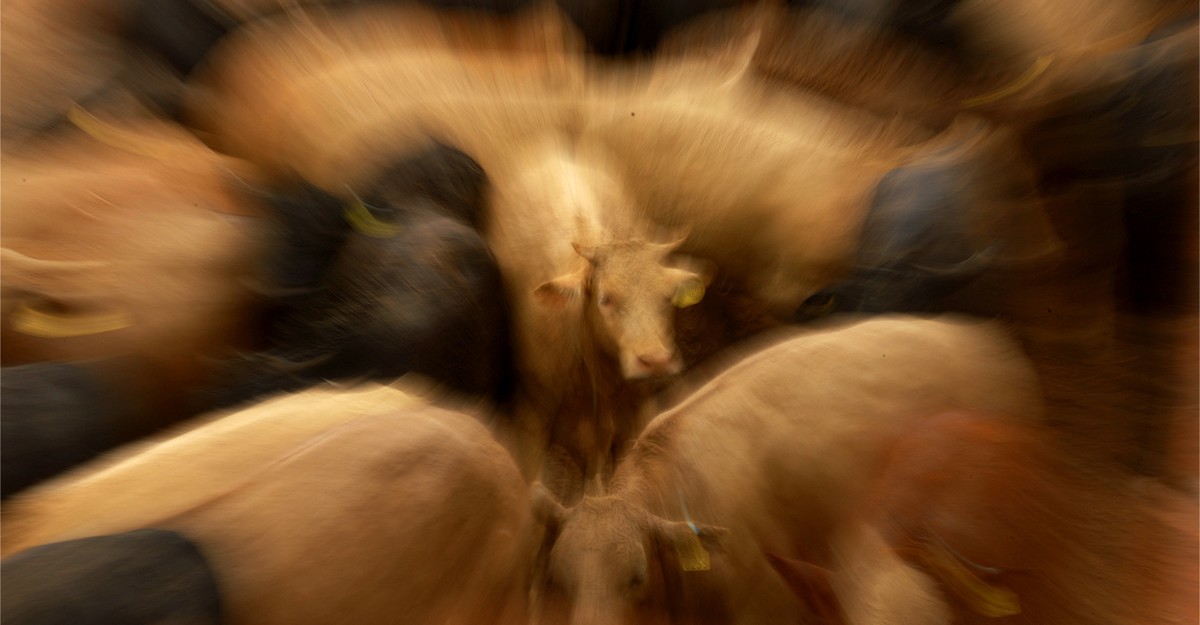Understanding The Threat: The Spread Of The Screwworm Fly

Welcome to your ultimate source for breaking news, trending updates, and in-depth stories from around the world. Whether it's politics, technology, entertainment, sports, or lifestyle, we bring you real-time updates that keep you informed and ahead of the curve.
Our team works tirelessly to ensure you never miss a moment. From the latest developments in global events to the most talked-about topics on social media, our news platform is designed to deliver accurate and timely information, all in one place.
Stay in the know and join thousands of readers who trust us for reliable, up-to-date content. Explore our expertly curated articles and dive deeper into the stories that matter to you. Visit Best Website now and be part of the conversation. Don't miss out on the headlines that shape our world!
Table of Contents
Understanding the Threat: The Spread of the Screwworm Fly
The insidious spread of the screwworm fly ( Cochliomyia hominivorax) is once again raising concerns among livestock farmers, wildlife officials, and public health experts. This parasitic fly, capable of inflicting devastating wounds on warm-blooded animals, including humans, poses a significant threat to agriculture and public health. Understanding its life cycle, spread, and control measures is crucial to mitigating its impact.
A Devastating Parasite:
The screwworm fly's larvae are the primary culprits. Female flies lay their eggs near open wounds or body orifices of livestock (cattle, sheep, goats, pigs) and wildlife. Upon hatching, these maggots burrow deep into the flesh, feeding on living tissue and causing severe, often fatal, myiasis (parasitic infestation). This can lead to significant economic losses for farmers due to livestock mortality, reduced productivity, and veterinary costs. The sheer scale of infestation can be terrifying, with hundreds, even thousands, of maggots consuming a single animal.
How Screwworm Flies Spread:
The spread of screwworm flies is facilitated primarily through the movement of infested animals. This can occur through the transportation of livestock across borders, the migration of wildlife, or even the passive transport of pupae on vehicles or equipment. Understanding these vectors is critical for effective control strategies. For example, plays a vital role in monitoring and controlling screwworm fly populations across the United States.
Recognizing the Signs:
Early detection is vital in controlling infestations. Look for these warning signs in your livestock:
- Restlessness and depression: Infected animals often exhibit signs of discomfort and lethargy.
- Swollen, inflamed wounds: The presence of pus and maggots is a clear indication of infestation.
- Foul odor: Infected wounds often emit a strong, unpleasant smell.
- Loss of appetite and weight loss: The parasitic infestation can lead to significant nutritional deficiencies.
Control and Prevention Strategies:
Combating the screwworm fly requires a multi-pronged approach:
- Early treatment: Prompt veterinary attention is crucial. Treatment often involves surgical removal of maggots, wound cleaning, and application of insecticides.
- Sterile Insect Technique (SIT): This method involves releasing large numbers of sterilized male flies into the environment, which mate with wild females, resulting in infertile eggs and a gradual decline in the population. This technique has been remarkably successful in eradicating screwworm flies from certain regions. Learn more about SIT from the .
- Wound management: Preventing wounds on livestock is key. This involves practices like prompt treatment of injuries, good husbandry practices, and controlling parasites like ticks.
- Quarantine and surveillance: Strict quarantine measures are essential to prevent the spread of infested animals. Regular surveillance programs help detect and respond quickly to outbreaks.
The Human Impact:
While primarily a threat to livestock, screwworm flies can also affect humans. Open wounds, particularly in neglected areas, can become infested, leading to painful and debilitating infections. Proper wound care and hygiene are crucial for human protection.
The Future of Screwworm Fly Control:
Ongoing research is focused on developing more effective and sustainable control methods, including improved insecticides, genetic modification techniques, and advanced monitoring technologies. International collaboration is also essential to combat the transboundary nature of this threat. The future of livestock production and public health depends on our collective efforts to manage and ultimately control the spread of this devastating parasite. Staying informed and implementing preventative measures are crucial steps in protecting both animals and people from the severe consequences of a screwworm fly infestation.

Thank you for visiting our website, your trusted source for the latest updates and in-depth coverage on Understanding The Threat: The Spread Of The Screwworm Fly. We're committed to keeping you informed with timely and accurate information to meet your curiosity and needs.
If you have any questions, suggestions, or feedback, we'd love to hear from you. Your insights are valuable to us and help us improve to serve you better. Feel free to reach out through our contact page.
Don't forget to bookmark our website and check back regularly for the latest headlines and trending topics. See you next time, and thank you for being part of our growing community!
Featured Posts
-
 Kfcs Growth Spree 7 000 Jobs Coming To The Uk And Ireland
May 28, 2025
Kfcs Growth Spree 7 000 Jobs Coming To The Uk And Ireland
May 28, 2025 -
 15 Social Security Cuts Proposed What You Need To Know For June 2025
May 28, 2025
15 Social Security Cuts Proposed What You Need To Know For June 2025
May 28, 2025 -
 Closure After Decades Four Wwii Airmen Identified From Non Recoverable Crash Site
May 28, 2025
Closure After Decades Four Wwii Airmen Identified From Non Recoverable Crash Site
May 28, 2025 -
 Harvard Commencement Speech A Doctors Plea For The Power Of Human Interaction In Medicine
May 28, 2025
Harvard Commencement Speech A Doctors Plea For The Power Of Human Interaction In Medicine
May 28, 2025 -
 Sirius Xm Stock Performance Past Success And Future Outlook
May 28, 2025
Sirius Xm Stock Performance Past Success And Future Outlook
May 28, 2025
Latest Posts
-
 Un Official Overcome With Grief Over Gaza Child Casualties Watch
May 30, 2025
Un Official Overcome With Grief Over Gaza Child Casualties Watch
May 30, 2025 -
 Chaos On Delta Flight Passengers Chase Loose Birds In The Cabin
May 30, 2025
Chaos On Delta Flight Passengers Chase Loose Birds In The Cabin
May 30, 2025 -
 Big Beautiful Bill Faces Roadblock Senate Democrats Strategic Advantage
May 30, 2025
Big Beautiful Bill Faces Roadblock Senate Democrats Strategic Advantage
May 30, 2025 -
 Heartbreaking Loss George Strait Mourns The Passing Of His Hero In North Texas Fire
May 30, 2025
Heartbreaking Loss George Strait Mourns The Passing Of His Hero In North Texas Fire
May 30, 2025 -
 Americas Obsession With Manhunts Examining Recent Jailbreaks
May 30, 2025
Americas Obsession With Manhunts Examining Recent Jailbreaks
May 30, 2025
